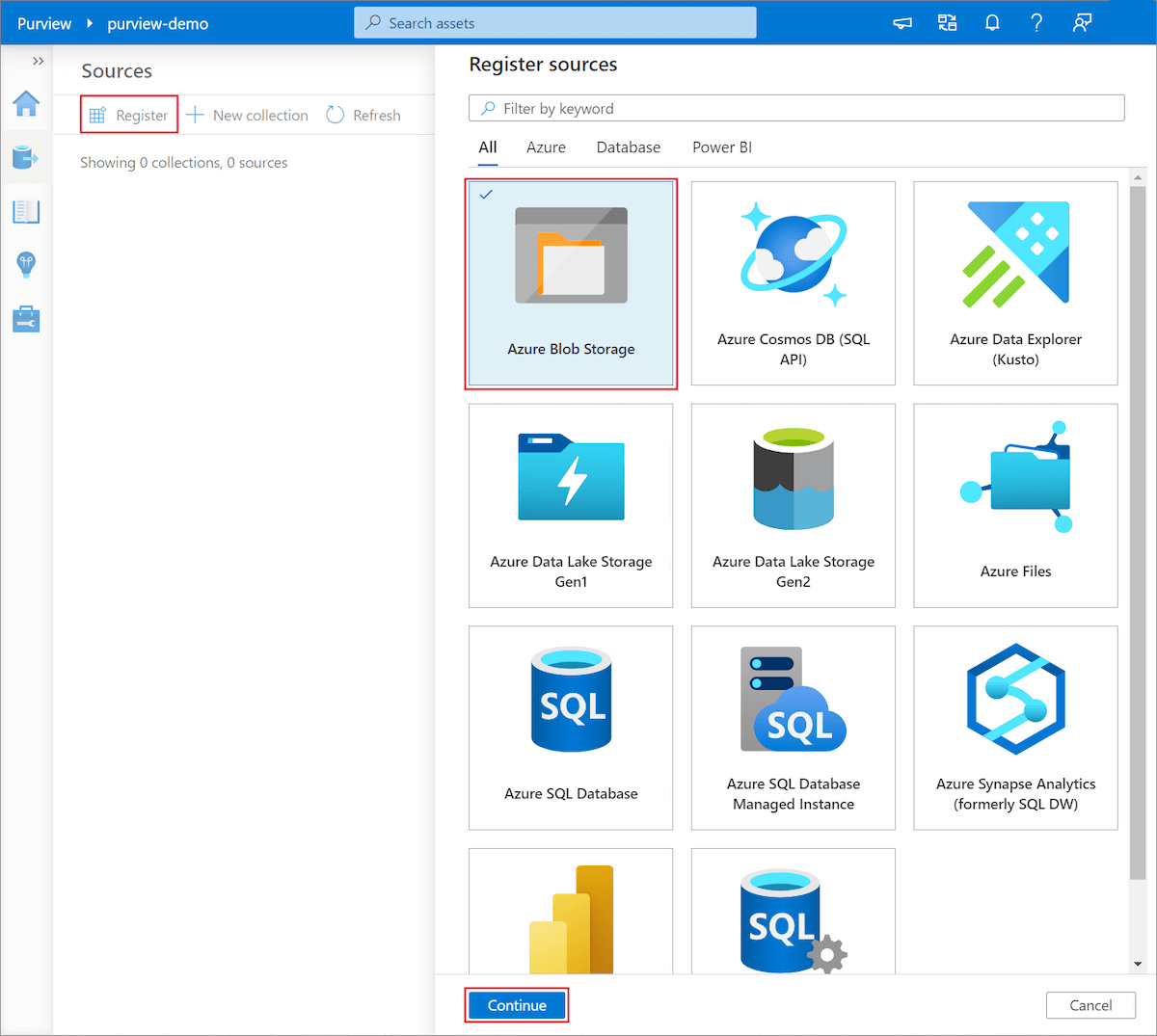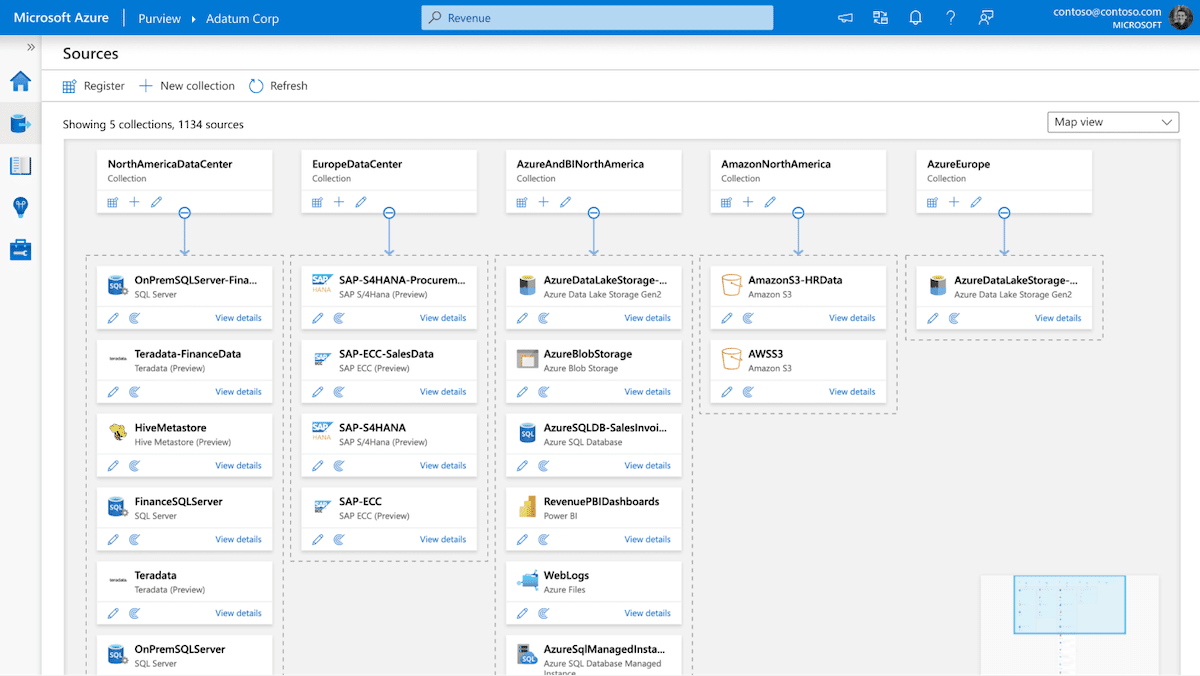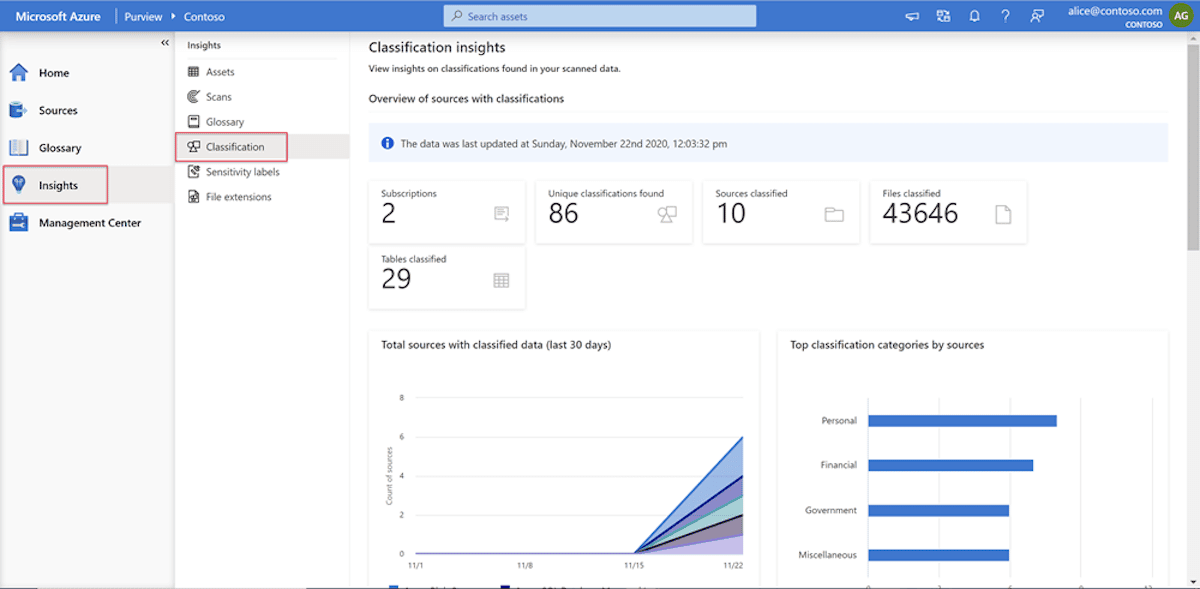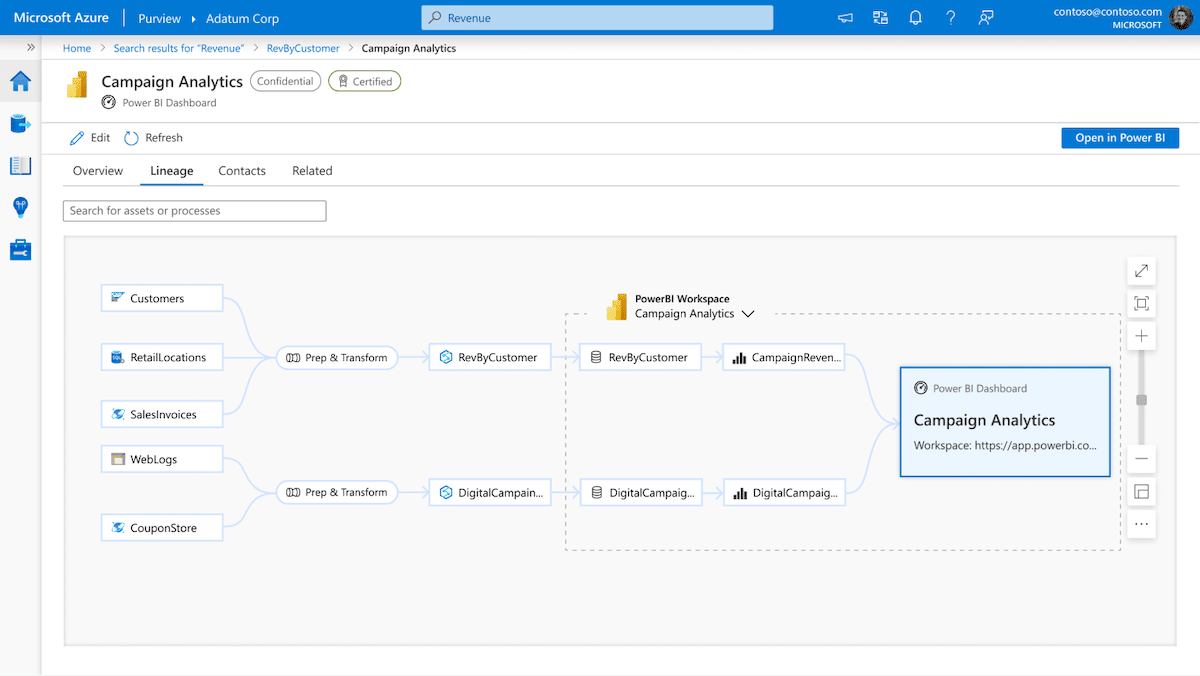As organizations climb the business intelligence (BI) maturity curve, data governance processes usually lag behind. Dashboards and reports are created to help answer business questions. However, when the business gets hungrier for more insights…
- A data source might be added to a finance report.
- Sales might want a measure for “Inventory on Hand” on their dashboard.
- Ops may want to see “Gross Margin” on their dashboard.
So, as analysts create and build new reports, these measures might be recreated, repurposed, or redefined. This, aside from the initial rework cost, also sets the organization up for additional friction. Sales is overcommitting based on “Inventory on Hand” while Ops and Finance can’t agree on “Gross Margin.”
Enter Azure Purview, a new data governance tool that’s worth getting excited about because it will help you overcome your governance process challenges.
What is Azure Purview?
For some of you Microsoft experts out there, Azure Purview is essentially an evolution of Azure Data Catalog. If that doesn’t mean anything to you, fear not.
Azure Purview is a unified data governance service that enables data discovery and mapping, data catalogs, and centralized data governance.
As Simon Whitely of Advancing Analytics noted in his great Purview introduction video, Purview is a bit of a misnomer or misleadingly named at the least. Purview sounds like a governance tool (which it absolutely is) but the name also overshadows the data discovery and data cataloging elements that make it such an exciting tool.
With Azure Purview, all of these capabilities are made possible by a single tool:
- Business users have a one-stop-shop to find the data that they need.
- Analysts can find what measures have already been built and leverage those instead of starting from scratch.
- Security folks have a birds-eye view of what sensitive data is being used, where and by who.
Getting Started with Azure Purview
Scanning Sources
Azure Purview already has out-of-the-box connectors for many data sources ranging from the obvious Microsoft products to SAP, Amazon S3, Teradata, and many more. If your data source is not included on this list, you can still add it leveraging the Purview REST APIs.
Purview scans for a wide range of metadata to capture technical, classification, lineage, and operational insights. This will be mapped onto Azure Purview Data Map.
Organizing Sources
You’re able to organize data sources into collections, which turn your chaotic data world into a more logical representation of your business. Collections also enable hierarchies. As an example with hierarchies, you might have numerous parent organizations with functional areas as the children.
Data Classification and Sensitivity
Many data laws and regulations have been around for a while (HIPAA, FERPA, FINRA, etc), but we’ve also seen an influx in recent years with GDPR, CCPA, and now…CPRA. It appears that the tide is not slowing.
It is more important than ever that organizations have purview (haha) into what sensitive data they are managing and that it is being managed appropriately.
Azure Purview leverages Microsoft 365’s data classification system. There are over 100 out-of-the-box classifications that enable you to automatically classify social security numbers, addresses, credit card numbers, names, etc. You’re also able to create custom classifications and sensitivity labels.
Using the Purview insights you quickly see where and how that data is being used.
Data Catalog and Lineage
Now here’s where Azure Purview gets fun for the business user and analysts.
Most BI professionals and consumers have experienced a time where they built something from scratch with their best knowledge only to later find out that some of the key fields were wrong. Azure Purview makes it easier for consumers and builders to quickly find the data they are looking for and understand its context.
For many organizations, data lineage is manually tracked (if at all) in Visios or Lucidcharts that are updated with varying regularity, because ongoing documentation is hard. Some organizations already have data lineage tools.
Purview’s pipeline view (below) gives you insight into the entire process your data is going through from the source to its endpoint. Having this unified view across your entire data catalog is incredibly powerful. BI professionals quickly identify where problems are occurring in the data process to better understand the overall scope of the issue.
The data governance game is rapidly changing and moving forward…Azure Purview is a sign of this evolution. As Purview evolves and matures, we expect it to enable more proactive management—stopping users from violating policies upfront rather than sending lagging alerts.
These are just a few reasons that we’re really excited about the continued rollout of Azure Purview. Reach out to us if you want to set up your first scan and talk about how your business can improve data governance to better serve your data consumers.








